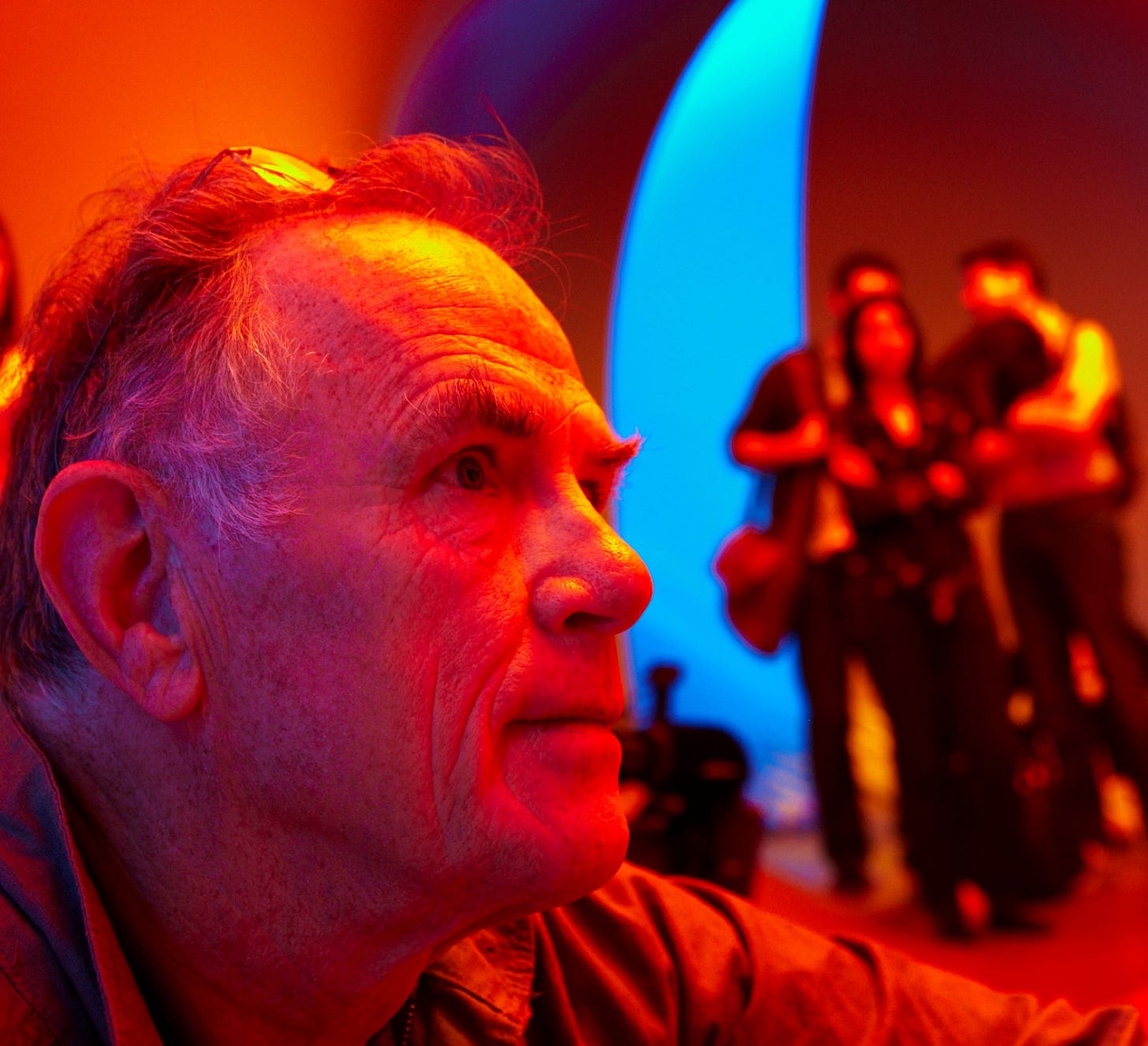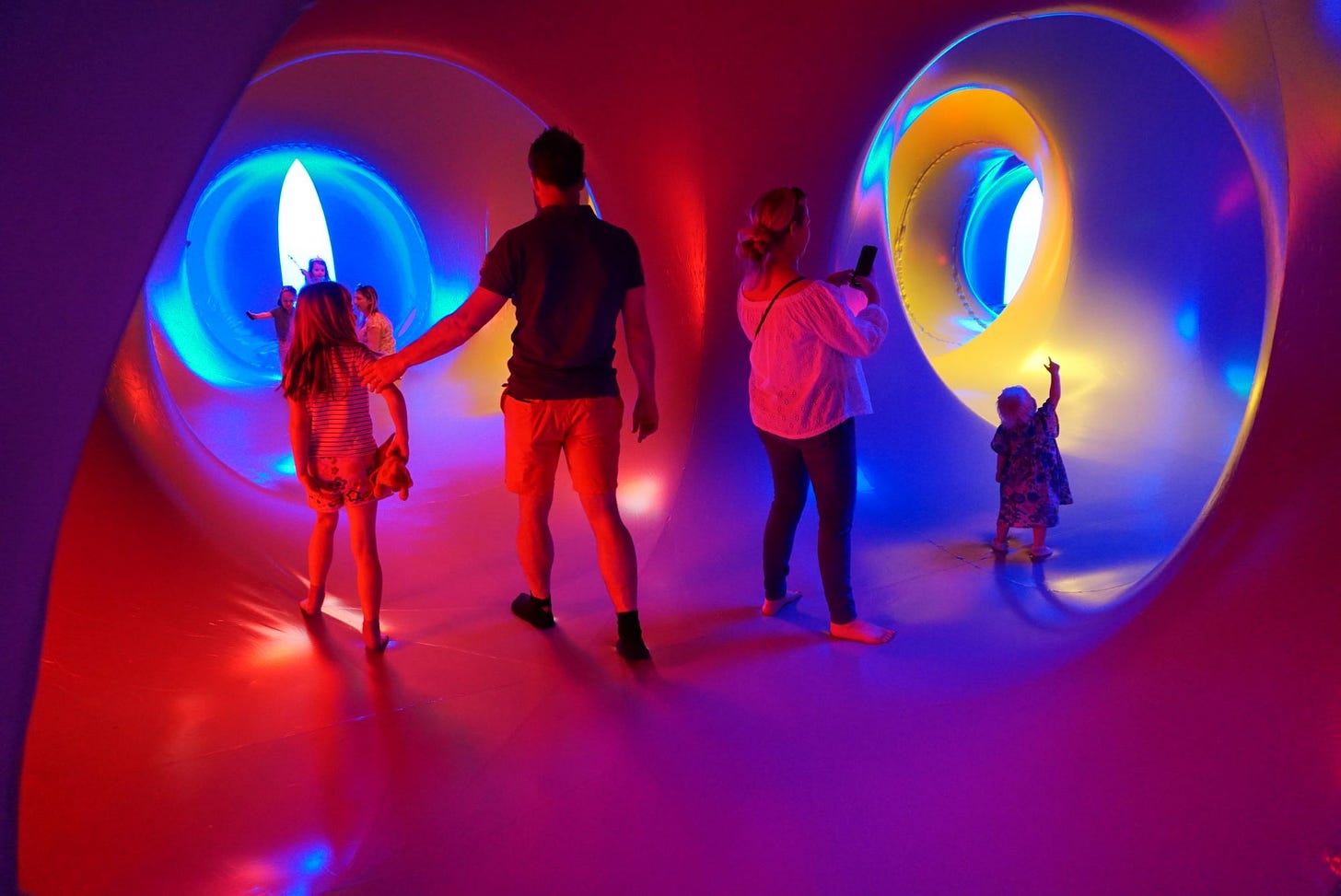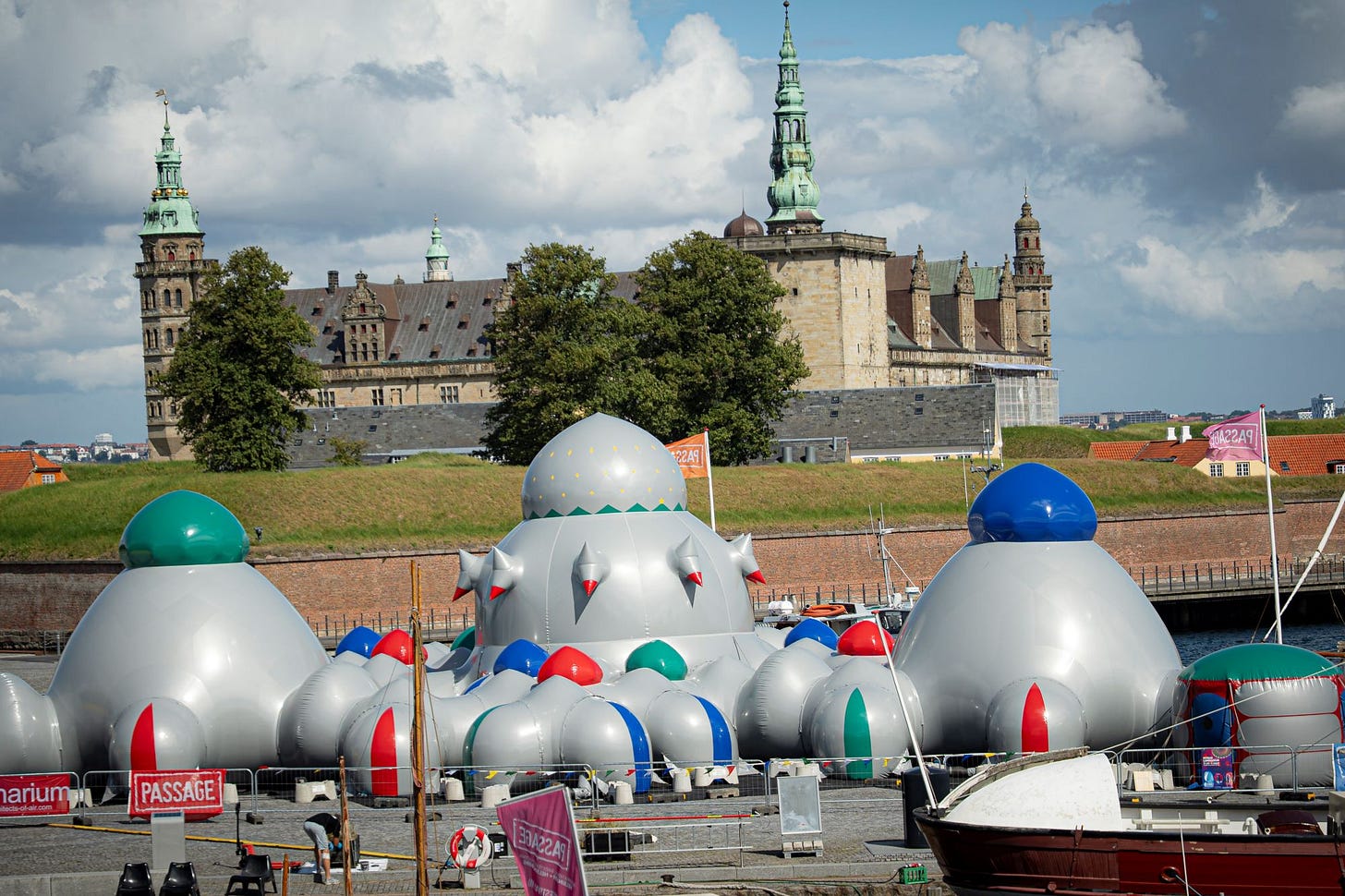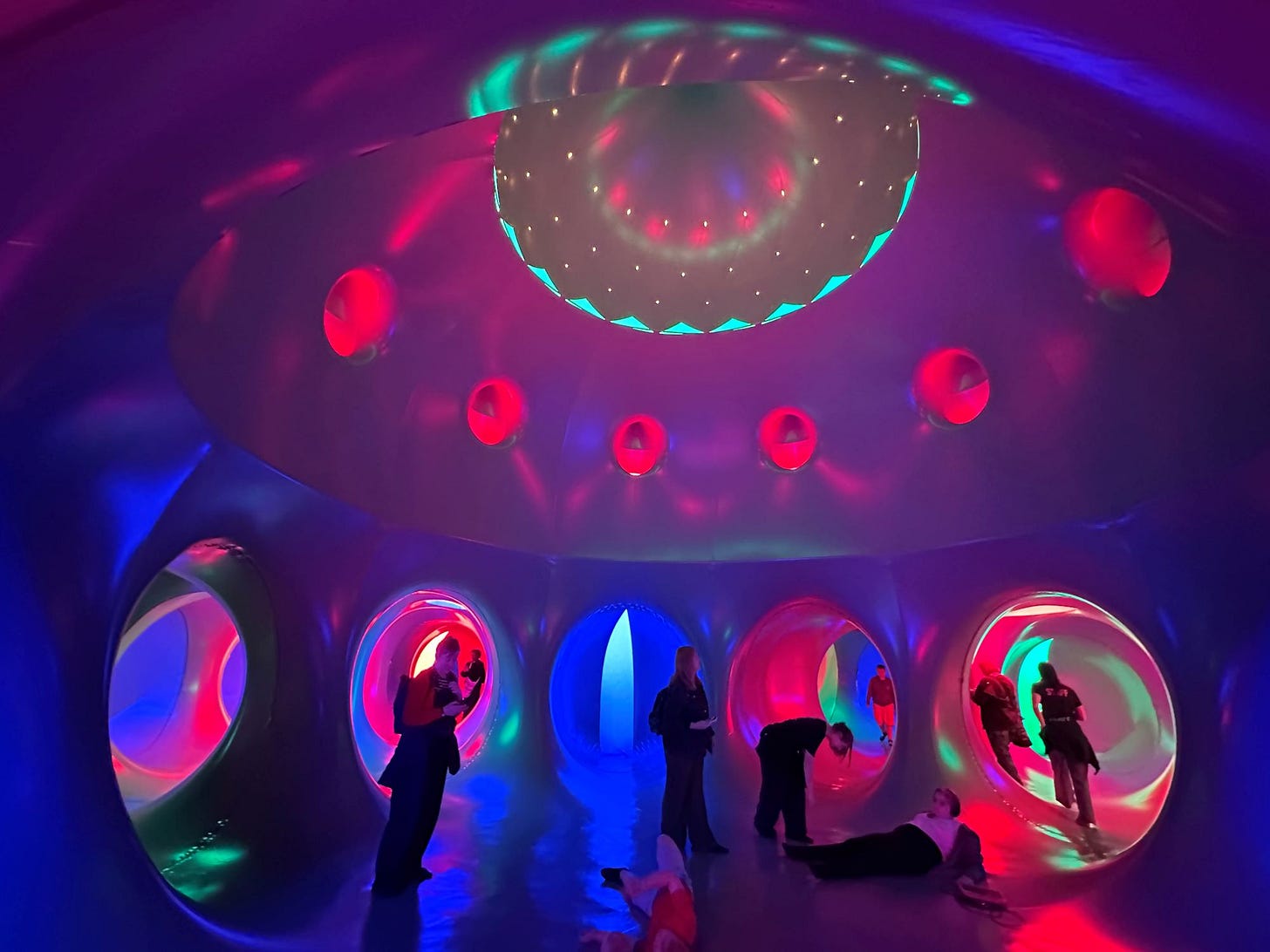How the man behind Myriad became an 'architect of air'
The next big attraction to lighten up Blyth
Sitting in a Nottingham churchyard, enjoying a bit of city centre peace, is a man who has brought joy to millions of people across the world – and aims to add to their number in the North East this month.
Alan Parkinson is the founder of Architects of Air, makers of luminaria, inflated architectural structures full of colour and light.
The latest of them, called Myriad, billed as “part art installation, part sensory playground”, is to be erected in Blyth Market Place, temporarily transforming the landscape.
It’s to be the latest attraction in the Blyth Celebrates cultural programme and comes with an invitation to “feel the colours, follow the paths and lose yourself in the wonder of this unique experience”.
You might imagine the man behind this sort of thing to be a showman, flamboyant like his luminaria and perhaps even a little puffed up.
But Alan describes himself as “a pretty introverted kind of person” and says he appreciates the demand for his popular creations as “a way to be out in the world”.
That said, he sings the praises of Google Earth, saying: “There’s so much you can do on it these days, so I’ve not physically been to Blyth.
“But we’ve had a number of meetings remotely and they seem to be a very good team.”
Alan also has a good team, expert operatives dotted around the country prepared to spring into action when a pile of brightly coloured plastic has to be transformed into one of his 3D palaces of wonder.
Luminarium creator is not one of those jobs they tell you about at school.
Alan was born in Darlington “on the cusp of the 1950s”, as he puts it, and then lived in Middlesbrough and Seaton Carew. His father moved around for his work as a pressure vessel engineer but Alan had no desire to follow in his footsteps.
“I had artistic inclinations and at one time aspired to be an artist,” he recalls. “I also wrote some poetry which was pretty dreadful.”
Nowadays he thinks of Architects of Air as “a kind of art practice, a creative practice at least”.
But it’s something he fell into after finding work with the probation service in Nottinghamshire in the early 1980s.
He was employed, part-time initially, to oversee offenders who had been ordered to do community service, helping to ensure children’s play areas were in good order.
There was a project involving inflatables and Alan became interested in repairing and improving them. “I was incredibly fortunate to have a manager in the probation service who was keen to see that project develop,” he says.
In 1990, working with a theatre company and a centre for adults with special needs, Alan created Eggopolis, an inflatable performance space for actors which toured the country.
He credits Stockton International Riverside Festival as an early showcase for follow-up creations that came to be called luminaria, no longer mobile performance venues but attractions in their own right.
In 1992 he formed Architects of Air and since then the company, based in Nottingham, has built more than 35 luminaria, each to a different design and each an attempt to improve on the last.
Necessarily, their lives are limited.
“Only six are viable these days,” says Alan, but adds that material from retired luminaria is recycled into subsequent new models.
Therefore, in Terceredix, Timisien, Arborialis, Daedalum, Luminimax and this year’s addition, Myriad, which comes to Blyth following a mini tour of Denmark, may be traces of much travelled predecessors.
Alan has seen many times and in many different places the pleasure they can bring.
“They’re easy things to understand really. They work on a very elemental level. You go inside, rather like going into a big tent, I suppose, and the light plays an important part in the experience.
“The best description I’ve heard was from a visitor who said it was like something between a womb and a cathedral.
“Sometimes people prone to claustrophobia can get a bit twitchy but once inside they tend to find it’s a reassuring kind of space. We do a fair amount of work with people with special needs and autism.
“They tend to find they’re places where they can relax and feel comfortable. The cathedral aspect, I think, is largely a function of the light.”
Alan loves the cross-generational appeal of these colourful, light-infused interiors.
“It’s often the children who get the adults inside,” he says.
“The adults probably think ‘I’m not going into a bouncy castle’ but children can’t go in without an adult and that’s actually one of the lovely things. It becomes a point of connection.
“We get heartwarming responses from older people who’ve been encouraged to go inside by children and grandchildren.”
Safety first is always the rule. Alan says each luminarium is kept up with a constant inflow of air and an airlock ensures the access point will remain inflated in the event of a power cut.
Externally, Myriad is weighted down with 18,000 kilos of what Alan calls ballast.
In the North East some will recall a tragic incident in Chester-le-Street in 2006 when an inflatable artwork called Dreamspace became airborne and two women were killed.
Its creator, Maurice Agis, who died in 2009, was subsequently fined for health and safety offences, the jury at a criminal trial having failed to agree a verdict on a manslaughter charge.
He was nothing to do with Architects of Air and Alan is scathing about his attitude to safety.
“Because we work so much abroad we have to comply with safety regulations in several different countries. We always take them seriously and have proper precautions in place.”
Alan says the last three years have been tricky for those involved in outdoor art with a lot of festivals having contracted or disappeared completely.
“That’s why I’m running around quite a lot at the moment and am over in the UK having lots of meetings (he moved to France nearly 30 years ago when his wife got a job in Geneva, just over the border).
“I’ve never been much of a marketeer but I’m having to change, although I think we’re still doing really good work. Most of it is outside the UK and we’ve got two structures at the moment in the United States.”
If Google Earth has made part of his job easier, computers have helped with the design process too.
“Years ago I did it all with traditional technical drawing, in which I’d had no training. It was very painstaking.”
Nowadays, aided by his digitally savvy son, Alan’s intriguing interiors can be planned using a computer modelling programme. “It’s great to have that facility,” says the man in the churchyard.
You can see Myriad in Blyth from October 25 to 28, 10am until each last daily admission at 4.15pm. Find details on the Blyth Celebrates website.






